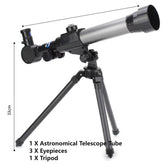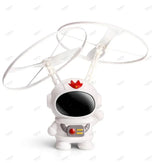The Complex Life of an Astronaut
When we imagine astronauts, we often picture heroic figures floating weightlessly in sleek suits, gazing down at our fragile blue planet. But behind that iconic image lies a reality far more complex—one that demands extraordinary physical endurance, deep emotional resilience, and relentless intellectual rigor. The life of an astronaut is not just about spacewalks and stardom; it is about enduring extremes, mastering precision, and living on the razor’s edge of human capability.
The Road to Space: Years of Preparation
Becoming an astronaut is often the culmination of a decade or more of training, education, and experience. NASA, ESA, and other space agencies receive thousands of applications for just a handful of spots in each selection cycle. The candidates chosen are usually pilots, scientists, engineers, or doctors—with advanced degrees and proven track records in high-stakes environments.
Once selected, astronaut candidates undergo intensive training that includes:
-
Parabolic flights to simulate weightlessness.
-
Survival training in deserts, jungles, and oceans.
-
Simulations of spacecraft systems and malfunctions.
-
Robotics training, including practice with Canadarm2 or rover operation.
-
Language immersion, particularly in Russian, given the international collaboration on the ISS.
And then there's the psychological conditioning—learning to manage stress, conflict, and isolation. Astronauts are rigorously tested not just on competence, but on composure.
Living in Orbit: An Earthbound Spirit in an Alien World
Life aboard the International Space Station (ISS) is structured yet surreal. Days are scheduled down to the minute, with astronauts working over 12 hours performing experiments, maintaining the station, and conducting spacewalks.
But the environment is unforgiving. Zero gravity wreaks havoc on the human body: bones weaken, muscles atrophy, fluids shift, and the heart reshapes itself. Eyesight often deteriorates due to increased intracranial pressure—a condition known as SANS (Spaceflight-Associated Neuro-ocular Syndrome).
Psychologically, the effects of confinement, monotony, and distance from loved ones can be profound. That’s why every astronaut is paired with a psychological support team. They send personal videos, curate custom playlists, and schedule regular communication with Earth.
Despite the challenges, astronauts often speak of a transformational experience—the “Overview Effect.” Looking at Earth from orbit fosters a deep sense of unity, humility, and responsibility. It changes the way many view life and our place in the cosmos.
Coming Home: Reentry, Readjustment, and the Next Frontier
Returning to Earth isn’t a gentle landing. The physical toll continues as the body readapts to gravity, with balance and motor control temporarily compromised. Emotionally, many astronauts face a reentry of the mind—grappling with the profound shift in perspective they’ve undergone.
Yet most remain in the space program, becoming mentors, engineers, or administrators. Others pivot to public service, education, or environmental advocacy, driven by the rare clarity space has given them.







































